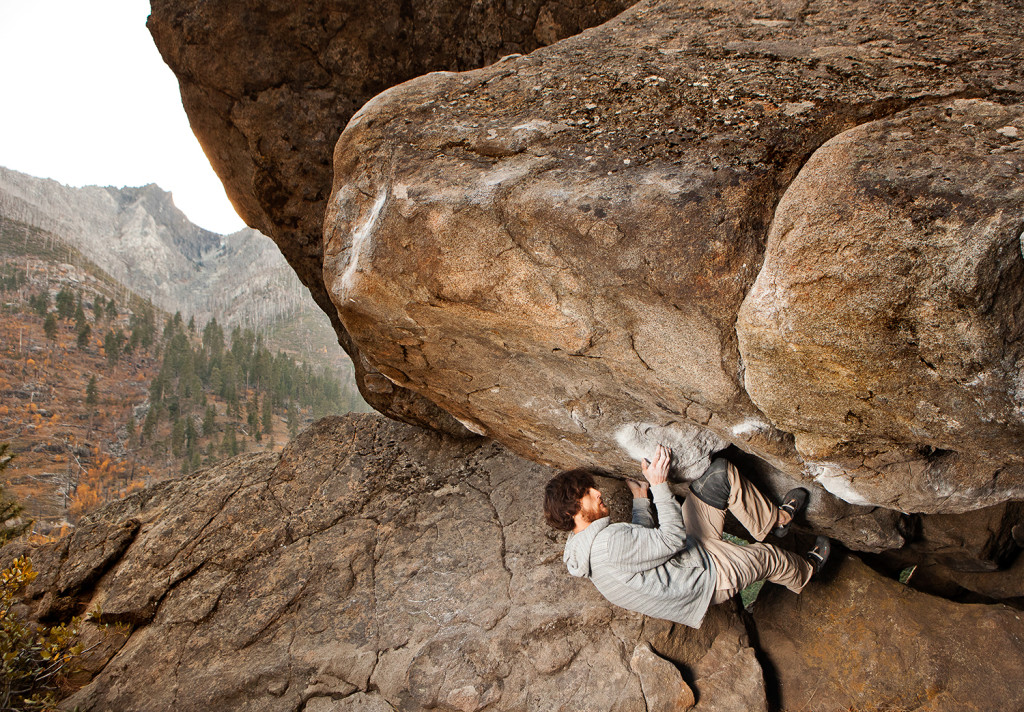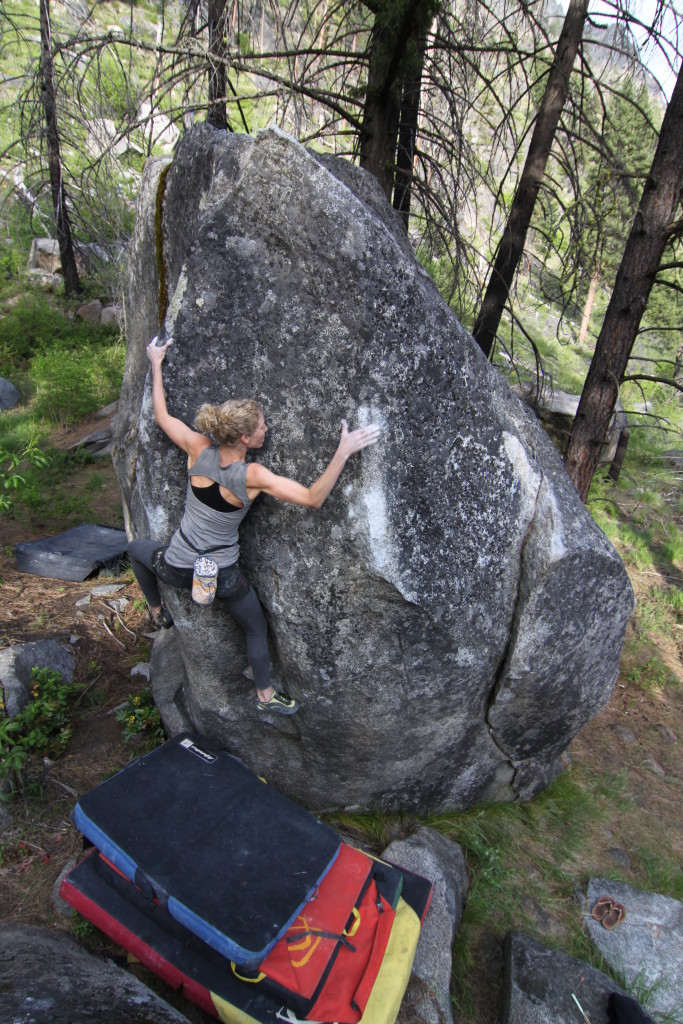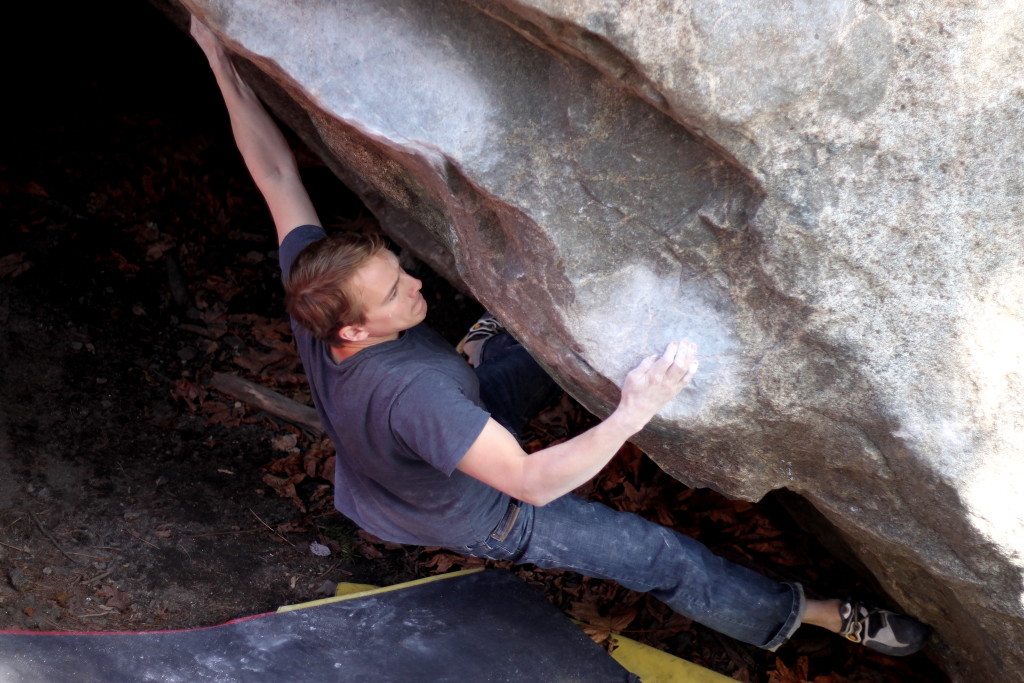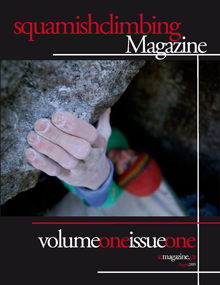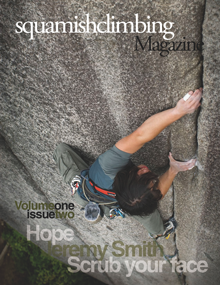As the author of the original guidebook, Kelly Sheridan has long been a staple of the Leavenworth climbing scene. I don’t think there has been a time when I have driven down icicle canyon without seeing Kelly’s Subaru on the side of the road. When I do see his car, I know that another cluster of great boulders has been discovered. Not only is Kelly a climbing ‘sommelier’ of the Northwest, he is also one of the nicest and approachable guys around. Since the publication of Central Washington Bouldering, Leavenworth has become a must on any climbing road trip to the Pacific Northwest. Over the past few months, the buzz has started regarding the publication of the new Leavenworth guidebook and Squamish Climbing Magazine thought it best to catch up with the man himself.
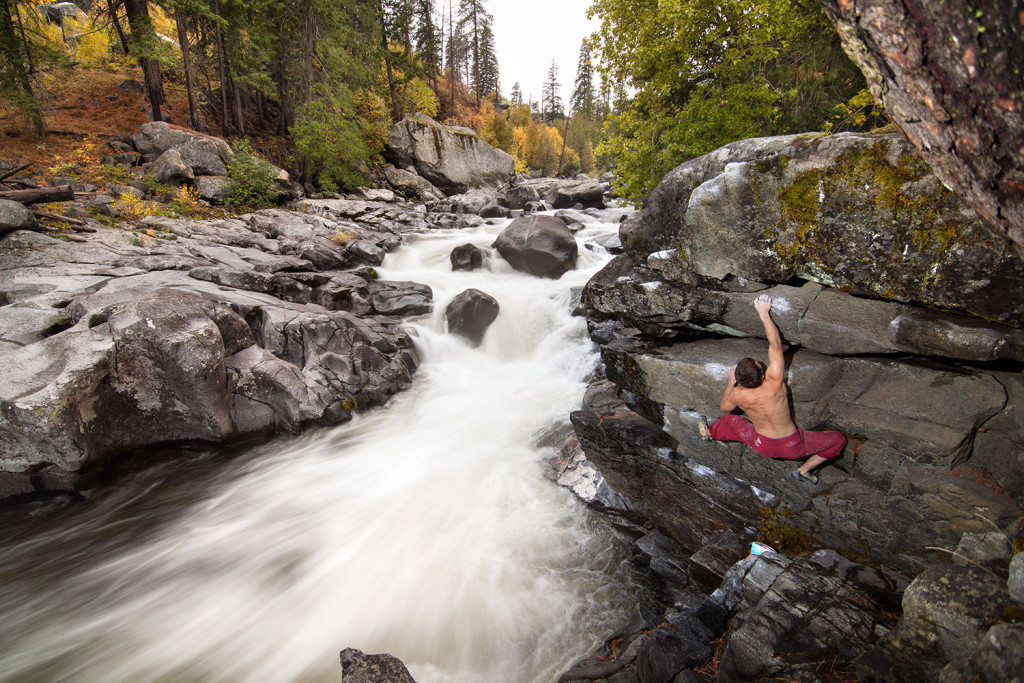
Myles Byam airing it out above Icicle Creek on The Sleeping Lady. Photo courtesy of Aaron Matheson ©
Hi Kelly. Thanks for taking the time to talk to us. So, word on the street is the new edition of the Leavenworth guidebook is almost finished. Can you tell us a little about it?
It is almost finished indeed! I put the final touches on the text, photos, and maps and sent it to Sharp End Publishing in October. They will do the layout and send it to print, each of which will take a couple of months. I will see proofs in between those two steps, but my work is otherwise done. The book should be out in time for the spring thaw.
The new book will be a vast improvement over the old guide. It will be in full color, on glossy paper, and will feature dozens of never-before-seen photos – I reused only a couple of ‘classic’ shots from the old book. The Leavenworth Bouldering book will also feature essays from a number of local climbers who have impacted the area’s bouldering over the years, which I’m really excited for the community to have.
Most importantly, the new book will dramatically increase the amount of published problems in Leavenworth. The old book included 548 problems, whereas this guide features 1,228 problems. Check out a blog post I wrote after sending the book off for more stats about how the new book will measure up to the old one (see blog post here).
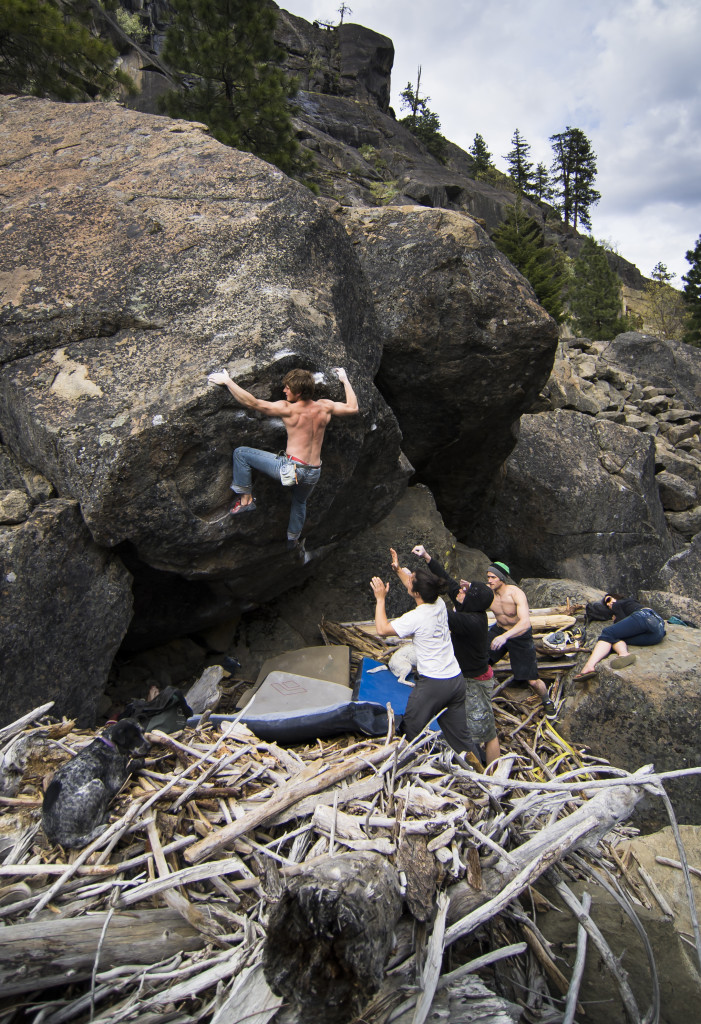
Drew Schick on Filibuster (V8). Photo by Max Hasson ©
To give our readers a little bit of background, How long have you been climbing and how long have you been an active developer in the Leavenworth region?
I started climbing in 2001 and moved to Leavenworth in 2005, after coming for what was supposed to be a brief visit with my good buddy Kyle O’Meara. I moved over the mountains to Seattle in 2007 but still spend most of my free time in and around Leavenworth. Last summer, my wife and I were lucky enough to buy a cabin in the area that is now our ‘home away from home.’
You were the author of the first guidebook. What was it like to discover Leavenworth in its infancy and are there any moments that stick out in your mind?
I moved to Leavenworth at a time when it was much quieter and its bouldering wasn’t really known outside of the state, but I didn’t ‘discover’ the area by any stretch of the imagination. It’s difficult to track down Leavenworth’s early bouldering history, but the likes of Dick Cilley and Greg Collum were putting up problems when I was still wearing diapers. A strong crew of locals and Seattleites all left their mark on the area before I arrived, including Damian Potts, Jeff Hashimoto, Chris Kirschbaum, Dobrisa Jurkovic, Jason Mikos, Brian Doyle, Ben Shrope, Jason Duckowitz, and lots of others I haven’t met. Others like Joel Campbell, Cole Allen, Johnny Goicoechea, and Ryan Paulsness were some of my earliest tour guides and are still pushing the area’s development.
One aspect of my early days in Leavenworth that sticks out was being present for part of the filming of Joel Zerr’s underground classic Northwest Connection. Joel did an amazing job of capturing the people, problems, and atmosphere in Central Washington at that moment in time, and did it with a filmmaker’s gift for crystallizing things in a larger-than-life cultural document.
What goes in to gathering information and writing such a book?
It’s about as mundane as one would think – a lot of time sitting on top of boulders drawing maps, taking 75 photos of one face to get a shot clear enough for use as a ‘topo’ photo, and scribbling in a sketchbook filled with notes along the lines of “start on the jug rail and make a big move to a sharp right-hand gaston…” After the ‘field work,’ there is a lot of late-night screen time transforming everything into a ‘manuscript’ of Word documents, Adobe maps, and high-res images. More than anything, writing a guidebook is a team effort. I am much less of a ‘developer’ than a ‘friend of developers,’ and I am heavily indebted to those friends who have graciously shared their new discoveries with me along the way.
Was this time around easier than the previous edition?
Actually, no, haha! Enough time had elapsed since the publication of Central Washington Bouldering that I had to re-learn the workflow process, not to mention how to use Adobe Illustrator. The most time-consuming part of a guide are the maps, and because the old guide was in black-and-white, it took nearly as long to colorize an old map as it did to create a map for a brand-new area. Couple that with the fact that I am a new-ish lawyer three years into practice and much of my 2014 was spent trying to wrap up the book after two years of dallying – the last three-months working on the book were brutal.
The guide was also made more difficult by the fact that I am a perfectionist to a fault and forced myself to proof everything ad nauseum lest I publish something that has a typo or worse, an inaccuracy. I was fortunate to receive only positive feedback following the publication of Central Washington Bouldering, in part by the grace of the community and in part because I worked obsessively to make every direction, description, and grade accurate. I think the controversy surrounding Rob Holzman’s recent Pacific Northwest Bouldering book shows how the community will reject a book they perceive as rushed or poorly researched or written, and I sincerely hope that the new Leavenworth book lives up to the bouldering community’s expectations and is something that people will find useful for years to come.
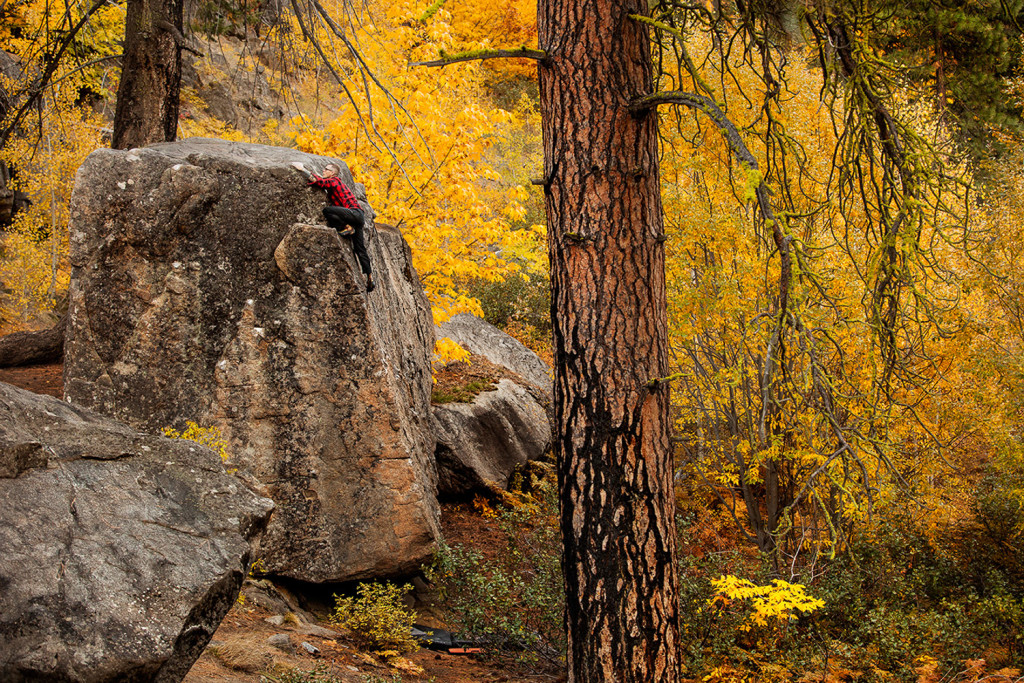
Andy Knepshield way off the deck on Cube Crack (v2). Photo courtesy of Aaron Matheson ©
How has the climbing community around Leavenworth changed since the initial publication of the guidebook?
In essence, the climbing community around Leavenworth hasn’t changed much at all. A few more people have moved there, and a few ‘local kids’ have grown into bona fide bad-asses, but the core resident community is more or less the same as it was in 2007 (or maybe 2009). What has changed is the amount of out-of-town visitors the town sees from Seattle, Portland, Vancouver, and any number of other places. As I wrote in another blog post on this subject, Leavenworth was so bereft of climbers when I arrived in 2005 that Kyle O and I would literally stop at the sight of an unknown car in the canyon just to say hello and figure out who these strange visitors were!
I heard that Goldbar will not be a part of this edition. Can you tell us what made you decide not to include it and some of the issues surrounding access in this area?
Sure. I’m in the process of writing a blog post on the current state of Gold Bar bouldering access, but here’s the nutshell version: Until 2009, Gold Bar was in an ORV area that was essentially treated as a pre-apocalyptic version of Mad Max. The road was barely doable without a 4X4, but there were no rules or restrictions. In 2009, under the threat of a lawsuit by environmental groups, the Washington State Department of Natural Resources revoked vehicle access to the area completely to undergo an environmental review and planning process. With the exception of a one-year access victory secured by the Washington Climbers Coalition, the Gold Bar boulders have since only been accessible by a 2-3 mile walk. Under the current ownership, pedestrian access is stable and secure but regaining vehicle access to Gold Bar is extremely unlikely.
I made the decision to do a stand-alone Leavenworth guide (as opposed to an update of the Central Washington Bouldering guide) at a time when the brief reinstatement of access had just been revoked and it looked like even pedestrian access to Gold Bar could be in jeopardy. To this day, I continue to believe that the one thing Gold Bar does not need is more visitors. Being one hour from Seattle, with a dense concentration of out-of-this world bouldering and attractive camping, the area is ripe for the classic boom-and-bust pattern that has plagued a number of bouldering areas around the country. As a board member of the Washington Climbers Coalition, I put stewardship and the ‘long game’ above an ‘access-at-any-cost’ approach. All of that said, there is nothing stopping people from bouldering in Gold Bar, and I hope they do – I just think it would do more harm than good for there to be a brand-new guide singing the area’s praises and encouraging every newly-minted boulderer in Seattle to check it out. Better that the area is reserved for those willing to ask around (and hike!) for their sends.
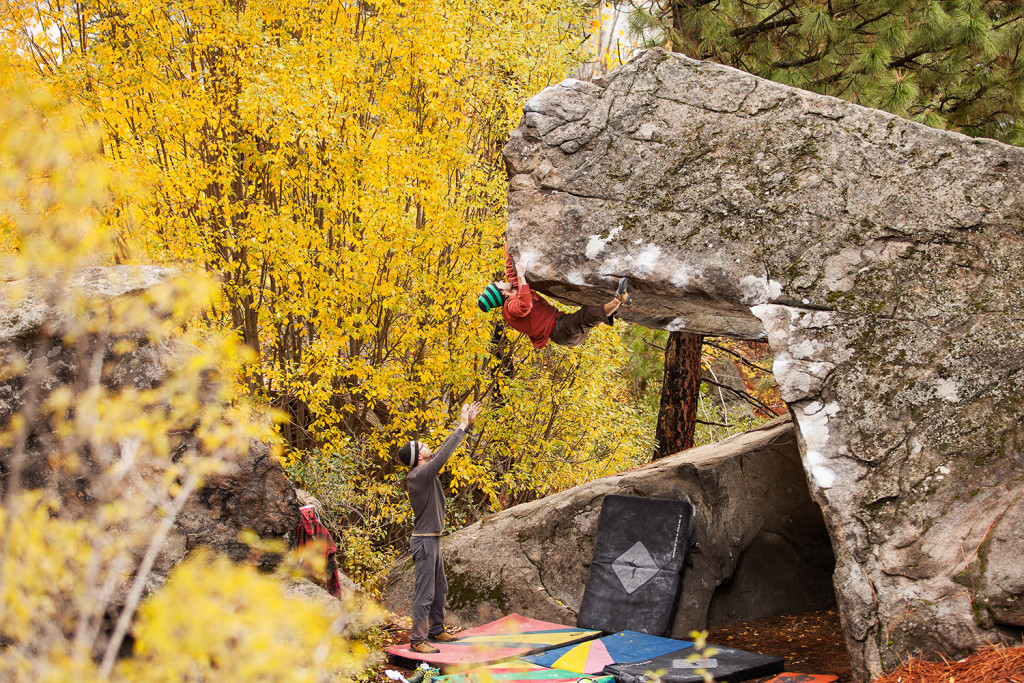
Tyler Weiss pulling through the crux of Pimpsqueak (v9). Photo courtesy of Aaron Matheson ©
Who has contributed to the majority of the development for the new book?
